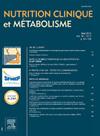Rythmes circadiens et obésité
IF 0.5
4区 医学
Q4 ENDOCRINOLOGY & METABOLISM
引用次数: 0
Abstract
The fundamental impact of the Earth’s rotation on living organisms necessitates the coordination of metabolism through rhythmic processes, resulting in the emergence of molecular and autonomous circadian clocks that anticipate diurnal variations. In mammals, these clocks are organized between a hypothalamic central clock and peripheral clocks present in the various organs. The central clock ensures the adaptation of major physiological functions to ambient light, while peripheral clocks are sensitive to other factors such as meal timing. The molecular mechanisms involved in synchronizing circadian clocks among themselves and with the environment are now better understood, highlighting the detrimental effects of chronodisruption caused by social jet lag and irregular eating habits associated with modern lifestyles. Preclinical studies confirm the links between chronodisruption, obesity, and metabolic diseases, suggesting the potential benefits of resynchronization interventions such as chrononutrition or chronopharmacology. This review presents the participation of the circadian clock in metabolic homeostasis and explores its potential in the prevention and management of overweight and obesity.
© 2023 Société francophone nutrition clinique et métabolisme (SFNCM).
Published by Elsevier Masson SAS. All rights reserved.
节律与肥胖
地球自转对生物体的根本影响,需要通过有节奏的过程协调新陈代谢,从而产生了预测昼夜变化的分子和自主昼夜节律钟。在哺乳动物中,这些时钟被组织在下丘脑中央时钟和存在于各种器官的外围时钟之间。中心时钟确保主要生理功能对环境光的适应,而外围时钟则对进餐时间等其他因素敏感。现在,人们对生物钟之间以及生物钟与环境同步的分子机制有了更好的了解,这凸显了社会时差和与现代生活方式相关的不规则饮食习惯造成的时间紊乱的有害影响。临床前研究证实了时间紊乱、肥胖和代谢性疾病之间的联系,提示时间营养或时间药理学等再同步干预措施的潜在益处。这篇综述介绍了生物钟在代谢稳态中的参与,并探讨了其在预防和管理超重和肥胖方面的潜力。©2023法国社会组织(SFNCM)。Elsevier Masson SAS出版。版权所有。
本文章由计算机程序翻译,如有差异,请以英文原文为准。
求助全文
约1分钟内获得全文
求助全文
来源期刊

Nutrition Clinique et Metabolisme
医学-内分泌学与代谢
CiteScore
0.80
自引率
16.70%
发文量
216
审稿时长
78 days
期刊介绍:
Nutrition Clinique et Métabolisme is the journal of the French-speaking Society of Enteral and Parenteral Nutrition. Associating clinicians, biologists, pharmacists, and fundamentalists, the articles presented in the journal concern man and animals, and deal with organs and cells. The goal is a better understanding of the effects of artificial nutrition and human metabolism. Original articles, general reviews, update articles, technical notes and communications are published, as well as editorials and case reports.
 求助内容:
求助内容: 应助结果提醒方式:
应助结果提醒方式:


